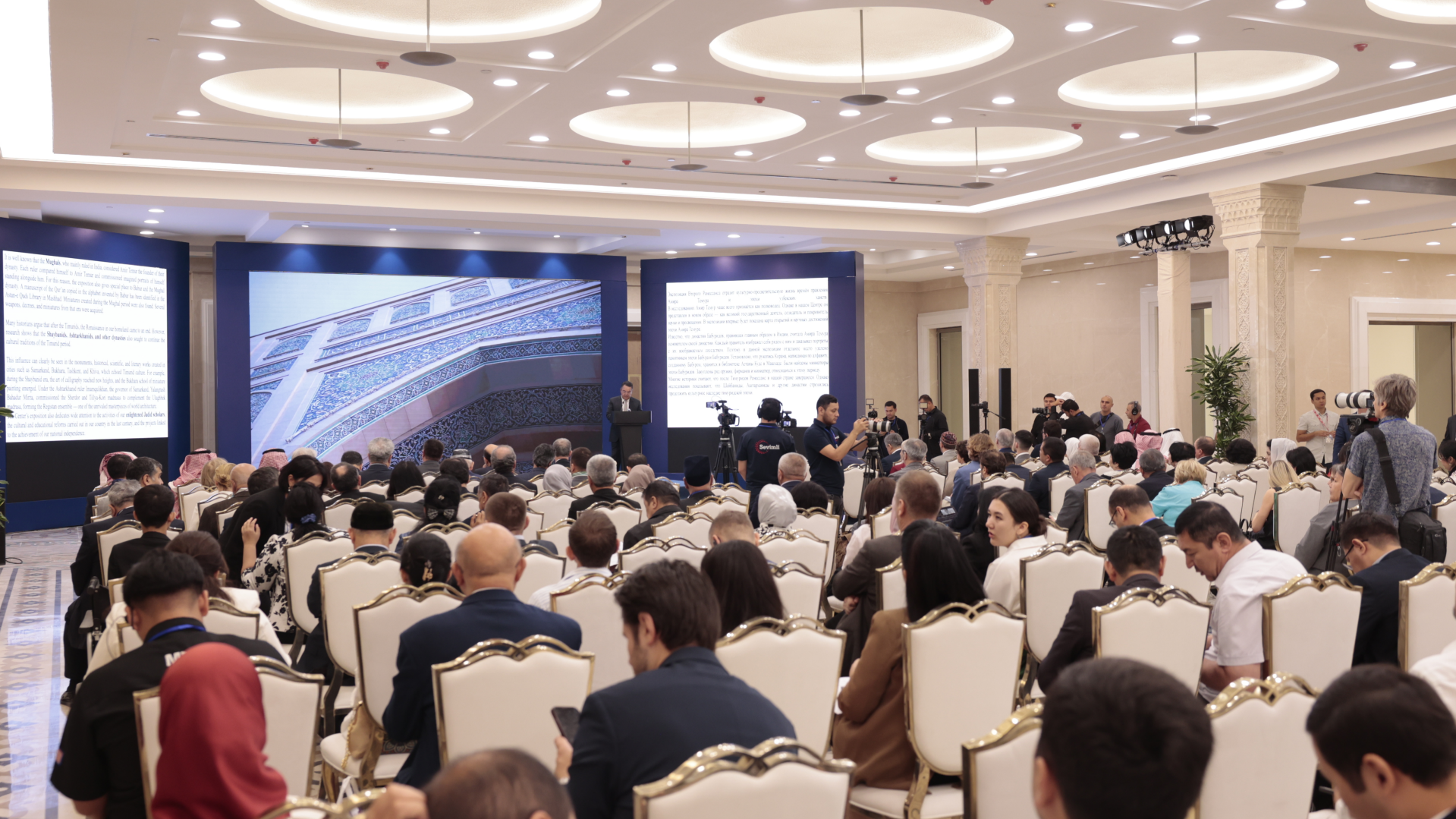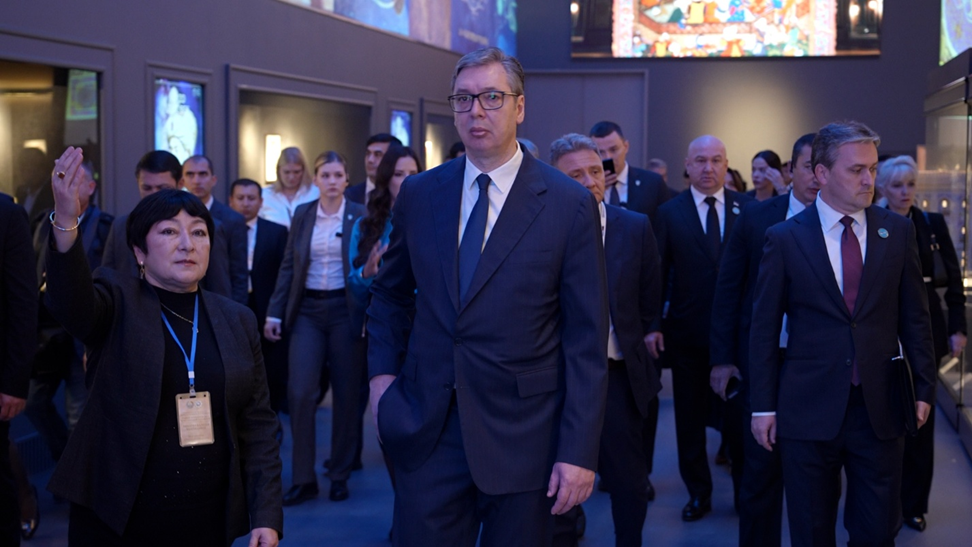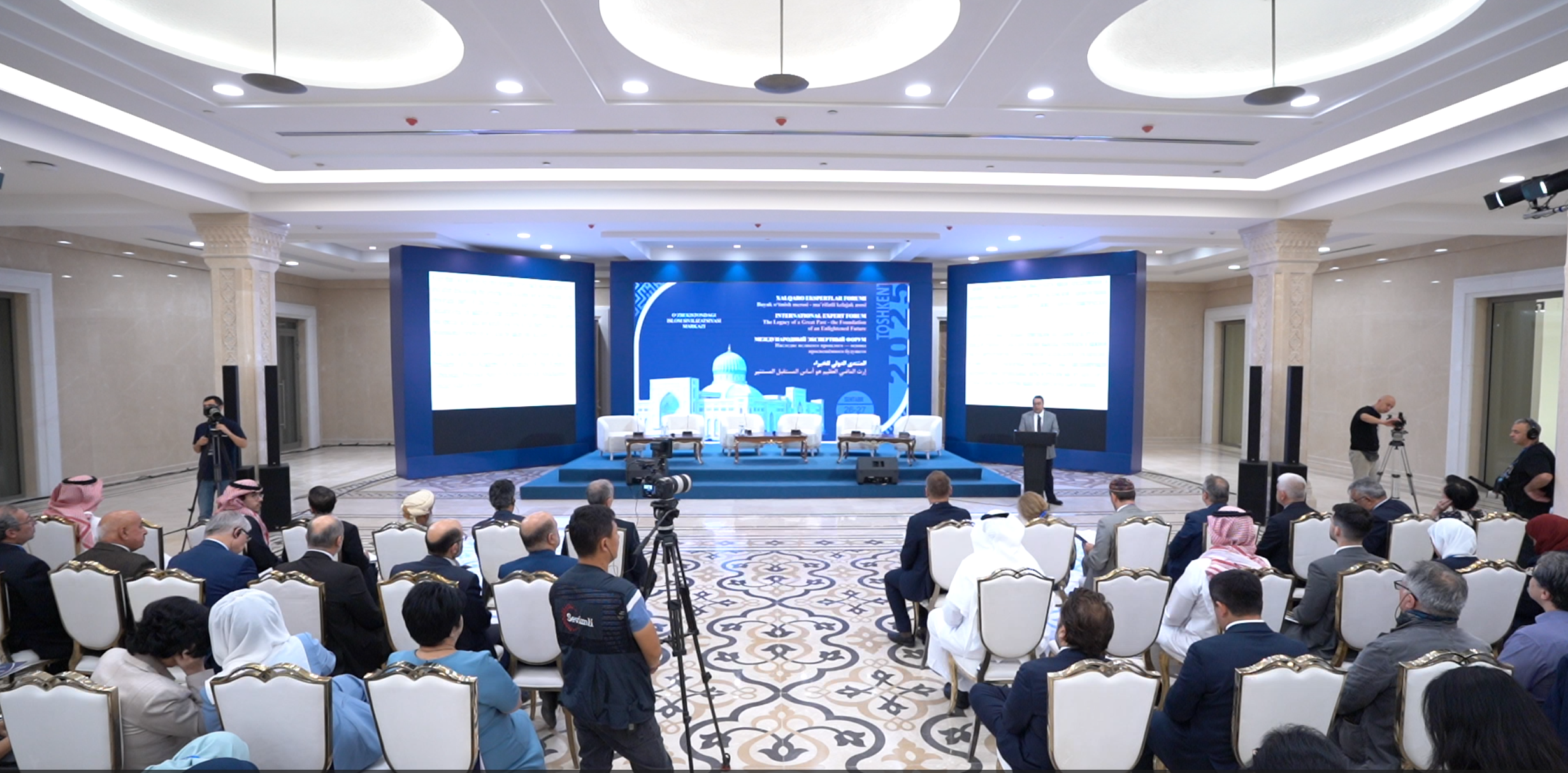A 52-Meter "Wall of Civilizations and Discoveries" is Being Created in Uzbekistan
Today, a press tour was organized for media representatives with the participation of scholars and specialists to become familiar with the creation process of the miniatures that will be placed along the “Wall of Civilizations and Discoveries” at the Museum of the Center of Islamic Civilization in Uzbekistan.
The “Wall of Civilizations and Discoveries,” which includes miniatures from the Second Renaissance period, is nearly 52 meters long and, with decorative plasterwork measuring one meter, reaches a height of 5 meters.

According to Behzod Khozhimetov, Doctor of Philosophy in Art Studies and artist, the miniatures for the wall have been selected based on the schools of Herat, Bukhara, Samarkand, and partially Indian miniature traditions.
“Among the nearly 50 miniatures, there were also works in the styles of Shiraz, Isfahan, and Tabriz miniature schools, but we selected images that depict our own scholars and historical realities. Additionally, scenes of hunting and war were excluded. This is because the concept of the mural primarily focuses on the themes of civilizations, personalities, and discoveries. The miniatures were chosen accordingly, without deviating from these themes. We have completed about 80% of the work on the more than 10 miniatures. The museum wall is 8 meters high, and it is planned to place this wall of miniatures on the section above 3 meters. Given the scale of the miniatures, we could even register it in the Guinness Book of Records. Our compositions are drawn on high-quality fabric with quality paints and treated with gold leaf imported from Italy. Now, all the completed works will be taken to the building of the Islamic Civilization Center in Uzbekistan, which is nearing construction completion, and the miniatures will be affixed to the wall using special adhesives. While selecting the miniatures, attention was paid to avoid repeating facsimiles, exhibits, and manuscripts already presented in the exhibition. The main idea was to emphasize the theme of discoveries and civilizations.
Some Miniatures Were Not Fully Preserved — Now They Are Being Restored as Part of the “Wall of Civilizations and Discoveries” in Uzbekistan
“Some of the miniatures have not survived in their entirety, so we restored their compositions to full form, adapting them to the dimensions of the wall without deviating from their original style. In addition, between each miniature, we drew borders using patterns typical of that era. These patterns were created in two styles — Bukhara and Herat schools. One of the patterns was selected by the scientific council members and will be placed between all the miniatures,” said artist Behzod Khozhimetov.


The contributions of Husayn Bayqara and Alisher Navoi to the Timurid Renaissance in Khorasan are also prominently featured. Through ancient miniatures, scenes from Herat will depict Navoi, Husayn Bayqara, and their circle, including Abdurahman Jami, Kamoliddin Behzod, Khondamir, and other representatives of Herat’s cultural life. The role of Husayn Bayqara as a patron of science and culture is emphasized. For this, miniatures from various manuscripts have been utilized.
The exhibition also pays particular attention to Babur and the legacy of the Baburids. In the section dedicated to Babur, extensive use is made of miniatures from his historical manuscripts. Notably, the miniature showing Amir Temur surrounded by Babur and his descendants holds a special place.
Furthermore, scientific, educational, and cultural life during the rule of the Shaybanids and Ashtarkhanids — who governed Central Asia after the Timurids — is depicted in historical illustrations created in that era.

Rustam Jabborov, the academic secretary of the Center for Islamic Civilization in Uzbekistan, also shared his ideas and recommendations with the artists involved in the creation of the miniature wall.
“A dynamic process is underway to enrich the internal content of the Center’s museum exposition and to decorate its walls with miniatures and images relevant to their respective historical periods. During extended meetings of the Center, scholars and experts proposed enriching the section on the 'Second Renaissance Period' through a composition of miniatures. Considering that this period begins with Amir Temur’s rise to power, a miniature related to this theme will be placed on the wall. The 1450 miniature from Sharafuddin Ali Yazdi’s Zafarnama, currently held in the British Library, will now be part of the Islamic Civilization Center's exposition in Uzbekistan. It depicts the 35-year-old Amir Temur surrounded by beks (nobles), commanders, court officials, and mentors across a double-page spread. Our artists adapted this image into a unified composition, fitting it to the wall’s dimensions. Each of these miniatures has a historical basis. I believe that visitors to the Center will feel the atmosphere of that era when entering the 'Second Renaissance Period' hall. This is because miniature art flourished during this time. Great artists such as Kamoliddin Behzod and Mahmud Muzahhib created during this period. The miniatures selected for the wall were produced by these artists and their students. These miniatures depict elements such as governance, public life, social support, women, and youth of that time,” said Rustam Jabborov.

At the Museum of the Islamic Civilization Center in Uzbekistan, the Wall of Civilizations and Discoveries, which includes miniatures from the Second Renaissance Period, is set to vividly bring history to life before the eyes of visitors.
Most read

Over 100 experts from more than 20 countries of the world are in Tashkent!

President of Serbia Aleksandar Vučić visited the Islamic Civilization Center in Uzbekistan

The Center for Islamic Civilization – a global platform leading towards enlightenment












